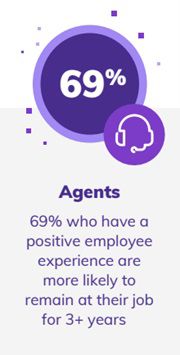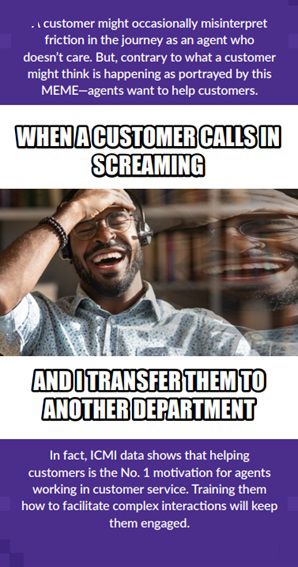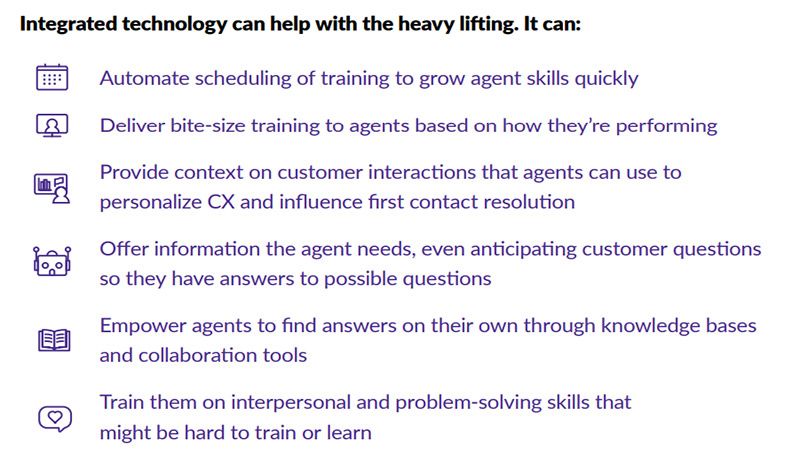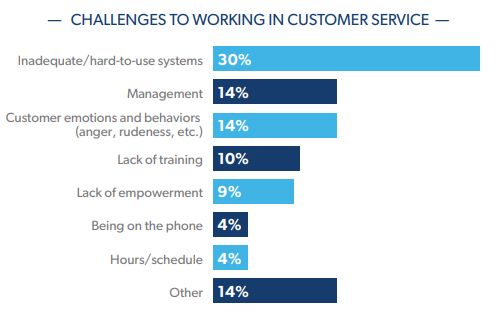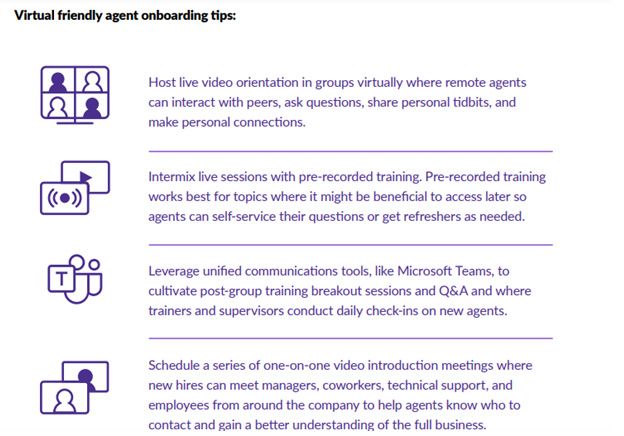I've noticed a lot of pictures on LinkedIn recently of the swag people are receiving from their new employers. New employees are scoring piles of branded gifts that typically include t-shirts, water bottles, travel coffee mugs, backpacks, and more.
In these days of shrinking labor pools, businesses will go the extra mile to become the employer of choice. Savvy organizations know that an employee’s impression of their company and ongoing retention begins on a new hire's very first day of work. Thus, they bring out the branded koozies and keychains.
Of course, there's much more to an effective employee experience strategy than fun gifts, but by making this nice gesture, employers set a positive tone for the entire employment journey. One notion that’s the same on a professional level as it is on a personal one: first impressions matter.
In addition to friendly, effective onboarding, an employer of choice ensures their employees find meaning in their work and streamlines internal processes and technology so they can perform their duties with as little friction as possible. Really, agents want the same things customers want: efficient, effortless, and personalized experiences.
Becoming an employer of choice is particularly important for contact centers. Not only do they need to find solutions to chronic agent turnover, but improving the agent experience can also improve customer experience. In fact, research by MIT CISR revealed that organizations that care about employee wellbeing have customer satisfaction scores two times higher than organizations that don't focus on employee wellbeing.[i]
This article will explore three key areas every contact center should include in their employee experience strategy to gain the coveted top company spot on employee and job seeker lists.
What does it mean to be an “employer of choice?”
An employer of choice is one that job seekers target and employees are not only content, but enthusiastic, to work for. They don’t merely talk the talk of optimized workplace culture, processes, and structure—they ensure that they walk the walk, too.
Employers of choice are typically characterized by:
|
· Strong leadership |
· Pleasant work environment |
|
· Healthy, supportive—even fun—culture |
· Prioritized employee mental health and wellbeing |
|
· Competitive salaries and benefits |
· Fair treatment of all employees |
|
· Opportunities for professional development and advancement |
· Effective, streamlined onboarding and ongoing training |
|
· Meaningful work |
· Clear pathway to employee success |
If you think about your local employers, you can probably identify some that stand out as employers of choice. One in my city is a university teaching hospital. It's a desirable employer because it has a great reputation among hospitals, the pay is competitive, the health care benefits are outstanding, and they have a reputation for not burning out employees, unlike some other local employers. Some people try for years to get hired on the business side, and retention and average tenure are both high.
Times have changed and these days, even employers that previously held the EOC title must compete for talented employees. The implementation of remote work that became the norm during the pandemic opened so many more potential employers to job seekers. The world is their oyster, so to speak, with increased choices. That, combined with a labor shortage caused by The Great Resignation, has shifted the balance of power to be more in the employee’s favor.
Businesses that figure out how to attract new hires like magnets and keep agents sticking around like Velcro will:
- Have an easier time recruiting new talent
- Retain more employees
- Realize higher customer satisfaction and better CX
- Not have to rely solely on pay to attract new employees
Wondering how to improve employee experience and become an employer of choice? Focus on the following three areas to help ensure success.
Focus area 1: Remove customer journey friction to help employee success
Customer-centric organizations must also be employee-centric. When organizations make a clear-eyed assessment of customer journeys, it’s clear that optimizing CX requires agents to work with modern technology, streamlined processes, and empowering policies. Removing barriers to agent success will also remove friction within customer journeys.
Agents, like customers, are often frustrated by unresolved issues, resolutions that take too long, bumpy channel transitions, and technology that isn't user-friendly. All these factors make agents less successful and create a negative employee experience.
Much of the time agents are already stressed by higher volume and increased interaction complexity. It doesn’t help to be saddled with antiquated technology and shifts full of endless, mundane tasks. The following solutions can make agents more successful at helping customers and improve the overall employee experience.
Implement a unified agent desktop
What value do employees put on technology? According to an Adobe study, 49% of workers say they’re likely to leave their current job if they’re unhappy or frustrated with workplace tech.[ii] Job performance and the employee experience have become so dependent on technology that half of workers would quit if they aren't satisfied with their technical tools.
In contact centers, where agents typically use multiple applications while they're assisting customers, streamlined workflows play a significant role in CX. A unified agent desktop can put everything an agent needs into a single interface. This can include all supported channels, CRM applications, knowledge bases, ticketing systems, performance management tools, and more. This eliminates the annoying need to log into and toggle through multiple applications while interacting with customers.
Source: NICE CXone: The Ultimate Guide to Agent Engagement and Empowerment (2020)
Automation for the quick contact resolution win
Customers aren't the only ones that want to have meaningful conversations. Agents want that, too, but an overabundance of tedious assignments can get in the way of connecting with customers. Mundane and repetitive tasks are barriers to providing satisfying CX.
Automation is a solution that can knock down these barriers so agents have the meaningful interactions they want. Automation tools can automate many backend tasks—such as entering data in multiple systems and scheduling appointments—with 100% accuracy. Working side by side with automation also improves the agent experience by reducing the risk of burnout.
A study by Adobe found that 1/3 of the agent work week is spent on unimportant tasks.[iii] Automation can help drive this number down and allow agents to spend more time on value-adding relationship building and problem solving.
Provide effective work-from-home technology
Not all contact center platforms are built for remote work, which can add friction to an at-home agent's day. Slow or difficult to access systems and not having all the tools onsite agents have is frustrating and will lead to lower agent performance. Just take a look at this graph based on an ICMI study:
Our research revealed that most contact centers will continue using work from home agents once the pandemic passes.[iv] It’s about time for organizations that jerry-rigged remote solutions at the start of the pandemic to implement permanent solutions that are easy to access, include everything at-home agents need, and keep agents connected to their supervisors and teams.
These solutions help remove technology friction that creates agent frustration and prevents them from optimizing their own job performance.
Focus area 2: Make a great first impression through superior onboarding
If you're a contact center leader, do you make new agents feel special during their first days of work? Or do they sit alone in a conference room filling out paperwork and completing HR compliance trainings?
ICMI discovered that only 2% of onboarding time is spent on training high value skills.[v] That’s not exactly a very high bar, so there’s plenty of room for improvement with how contact centers greet new agents.
When identifying how to improve employee experience, be sure to assess your onboarding processes. You don't necessarily need to welcome new agents with giant swag bags, but they should quickly meet their supervisors and teammates and begin learning the company's culture and CX standards.
Getting to know their supervisor and teammates is especially important for new at-home agents. A new remote job can feel isolating without regular contact with other team members. Onsite onboarding processes can't just be tweaked for remote agents—they need to be reimagined.
It's important to remember that onboarding isn't just a three- or four-day event. The onboarding process should continue until an agent is fully productive, which could be as long as 90 days or more.
During this ramp-up time, it's important for new agents to realize some early successes so that they feel like they're contributing. The streamlined technical solutions discussed in the previous section can greatly reduce learning curves and help new agents to quickly become productive. New agents also need frequent feedback during this extended onboarding period to keep them on track and reassure them about their performance.
Additionally, making information available when and where they need it can help new agents provide the knowledgeable and personalized experiences customers value and expect. A smart, well-maintained knowledge base can provide easy access to answers, while CRM integrations deliver the contextual information needed to tailor interactions.
A superior onboarding experience will reassure agents that they now work for a true employer of choice.
Focus area 3: Foster a sense of purpose
Contrary to some earlier management practices, customer service agents aren't human automatons who live to close tickets. Like everybody else, agents want to feel like their time at work is spent on purposeful activities.
Promotions and lateral moves aren't always possible, which puts the onus on contact centers to enrich their agents' jobs.
Some of the previously discussed technical solutions can help change the nature of agent responsibilities and make their duties more fulfilling. For example, automating simple tasks shifts agent activities away from "fixing" and towards complex problem solving.
Gallup found that the top reason people leave their jobs is related to career growth opportunities.[vi] If contact centers can't promote their high-performing agents, they can at least satisfy their hunger for development by teaching them new skills. Top performers love learning new things, but unfortunately, ICMI found that only 9% of contact centers have formal ongoing training programs.[vii]
Everyone likes to be recognized and rewarded for good performance, so a good employee experience strategy should also include plans for ongoing agent recognition. And to increase the number of agents who are recognized, organizations can use gamification to make performance improvement fun and rewarding.
There's so much truth in the notion that when you take good care of your agents, they'll take good care of your customers. An employer of choice focuses on employee well-being and is rewarded with higher employee retention, better customer satisfaction, and enviable business results.
Cultivating a reputation as an employer of choice doesn’t have to be difficult. In fact, you can learn to resonate with employees as a desirable organization to work for while simultaneously gaining key insights into upskilling your agents. Just check out the NICE CXone Ultimate CX Agent Guide.
[i] MIT CISR: Employee Experience: Enabling Your Future Workforce Strategy (2018)
[ii] Workfront: The 2021 State of Work (2021)
[iii] Adobe: The Future of Time: A global study fielded by Adobe Document Cloud (2021)
[iv] NICE CXone: 2020 Customer Experience (CX) Transformation Benchmark (2020)
[v] NICE CXone: The State of Agent Experience and Engagement in Today’s Contact Centers (2019)
[vi] Gallup: Consulting Expertise: Employee Experience (2022)
[vii] NICE CXone: The State of Agent Experience and Engagement in Today’s Contact Centers (2019)




